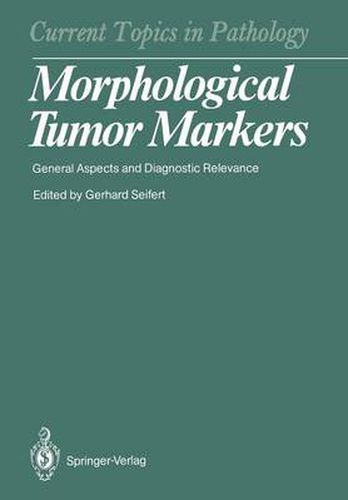Readings Newsletter
Become a Readings Member to make your shopping experience even easier.
Sign in or sign up for free!
You’re not far away from qualifying for FREE standard shipping within Australia
You’ve qualified for FREE standard shipping within Australia
The cart is loading…






This title is printed to order. This book may have been self-published. If so, we cannot guarantee the quality of the content. In the main most books will have gone through the editing process however some may not. We therefore suggest that you be aware of this before ordering this book. If in doubt check either the author or publisher’s details as we are unable to accept any returns unless they are faulty. Please contact us if you have any questions.
New methods in immunocytochemistry and hybridization techniques enable the pathologist active in diagnosis to clarify more effectively problems in the classification and prognosis of tumors. By adopting these methods into his diagnostic repertoire it will be possible to create a closer, more productive connection between morphological diagnosis and clinical work. This volume gives the reader an up-to-date general survey from international experts of the method, technique and practical application of these new procedures.
$9.00 standard shipping within Australia
FREE standard shipping within Australia for orders over $100.00
Express & International shipping calculated at checkout
This title is printed to order. This book may have been self-published. If so, we cannot guarantee the quality of the content. In the main most books will have gone through the editing process however some may not. We therefore suggest that you be aware of this before ordering this book. If in doubt check either the author or publisher’s details as we are unable to accept any returns unless they are faulty. Please contact us if you have any questions.
New methods in immunocytochemistry and hybridization techniques enable the pathologist active in diagnosis to clarify more effectively problems in the classification and prognosis of tumors. By adopting these methods into his diagnostic repertoire it will be possible to create a closer, more productive connection between morphological diagnosis and clinical work. This volume gives the reader an up-to-date general survey from international experts of the method, technique and practical application of these new procedures.